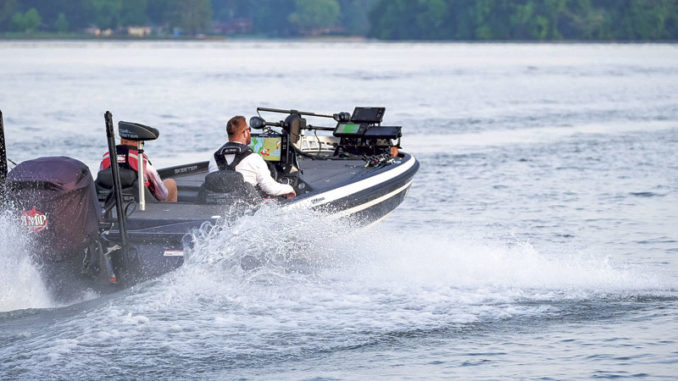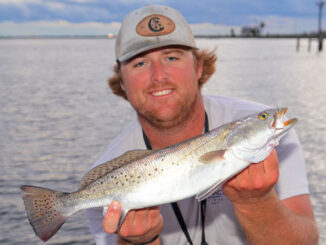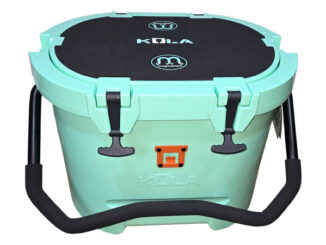
After more than 50 years in this writing business, there are times when a dread comes over me about what must be written. This is one of those times.
In late May, there was a two-boat nighttime collision on False River, the 13-mile long oxbow near New Roads in Pointe Coupee Parish.
It occurred during the near 50-year-old Friday Night Cookie Jar tournament held regularly during the spring and summer. This one’s personal to me and in many ways. I’ve personally fished in this tournament more than once and I can’t count the days and hours I’ve spent in a boat on False River. We constantly preach boating safety.
Two men died in that wreck, and Wildlife and Fisheries continues its investigation of the fatal crash between a lengthy bateau and a 20-foot fiberglass bass boat. The photo of the mangled bateau leaves a wonder of how anyone in that boat survived. But, there was one, along with the 15-year-old son of Baton Rouge dentist Dr. Kenneth St. Romain.
It was a most cruel and ironic twist, because St. Romain is the son of Kenneth St. Romain, a man who’s dedicated countless volunteer hours to improving safety on False River. The eldest St. Romain has organized an annual bass tournament on his home lake through the Pointe Coupee Kiwanis Club.
Proceeds from the PCKC tournament pay for installing and maintaining buoys along the pier-studded lake to limit no-wake zones within 50 yards of the bank. It’s also helped limit the run-ins between the lake’s two main user groups — fishermen working the piers for bass and water skiers/pleasure boats.
Disturbing discovery
After the recent accident, it took several hours for Wildlife and Fisheries to recover St. Romain’s body, and what they found was disturbing. St. Romain was wearing one of those inflatable life vests. The problem was the vest didn’t inflate. Pay attention here.
For those who don’t know about these personal flotation devices (PFDs), some come with what’s called “an automatic inflation mechanism,” something we’ll call an “activator” for short. Activators are designed to inflate the vest after the wearer hits the water. The activator is supposed to trigger a CO2 cartridge to inflate the vest.
That didn’t happen in this instance, and the vest’s manufacturer won’t be identified here to avoid all those legal entanglements in our litigious world.
Some of these vests come with a pull cord to activate the cartridge, but that doesn’t help if the vest wearer is unconscious.
This was not an isolated instance: it happened to me.
My vest didn’t inflate when I accidentally hit the water one time. Thank goodness, I pulled the cord and it inflated, but I was aware enough to pull the backup manual yellow tab even after pulling a “stupid” and leaning out over the gunnel to free a fishing lure.
What happened after my stunt sent me to changing the activator in another inflatable vest. Apparently, that’s something needing annual attention, along with checking the CO2 cartridge for an expiration date. If that doesn’t work, the vest doesn’t work.
What happened after that tragic Friday night triggered a quick public Wildlife and Fisheries response, apparently because this wasn’t the first time the LDWF’s Safe Boating staff had seen the same problem with these vests, both during accident investigations and safe boating checks.

Here’s what that staff reported:
• All PFDs must be U.S. Coast Guard approved, and there’s a label on the PFD that says if it is. PFDs must properly fit the boater wearing it, including any age and weight restrictions. A little-known federal regulation restricts using USCG-approved inflatable vests to fishermen/boaters 17 and older.
• In the let-the-buyer beware column, the report stated there are some inflatable vests on the market without a CO2 cartridge either attached or included. While these PFDs are being likely sold at a reduced price, they either come with the cartridge included but not attached and properly armed or the cartridge is sold separately. Appropriate cartridges must be purchased additionally and installed by the customer prior to use.
Some inflatable vests are inflated by breathing through a tube.
The report warns, “These PFDs could be largely ineffective and have little or no inherent buoyancy. LDWF suggests use of inherently buoyant PFDs or a PFD properly equipped with an automatic inflation mechanism. If an unconscious or injured boater enters the water with a faulty PFD they may not be able to initiate inflation.”
• Read all instructions, because all inflatables are not the same in function and/or deployment. The report says, “Wearers must be made aware of deployment procedures and should never assume that an inflatable will automatically inflate.”
So, check your inflatable vest now, and the Safe Boating staff recommends having a “buoyant” throwable PFD aboard if or when an inflatable unintentionally inflates.
It could be a life saver.


